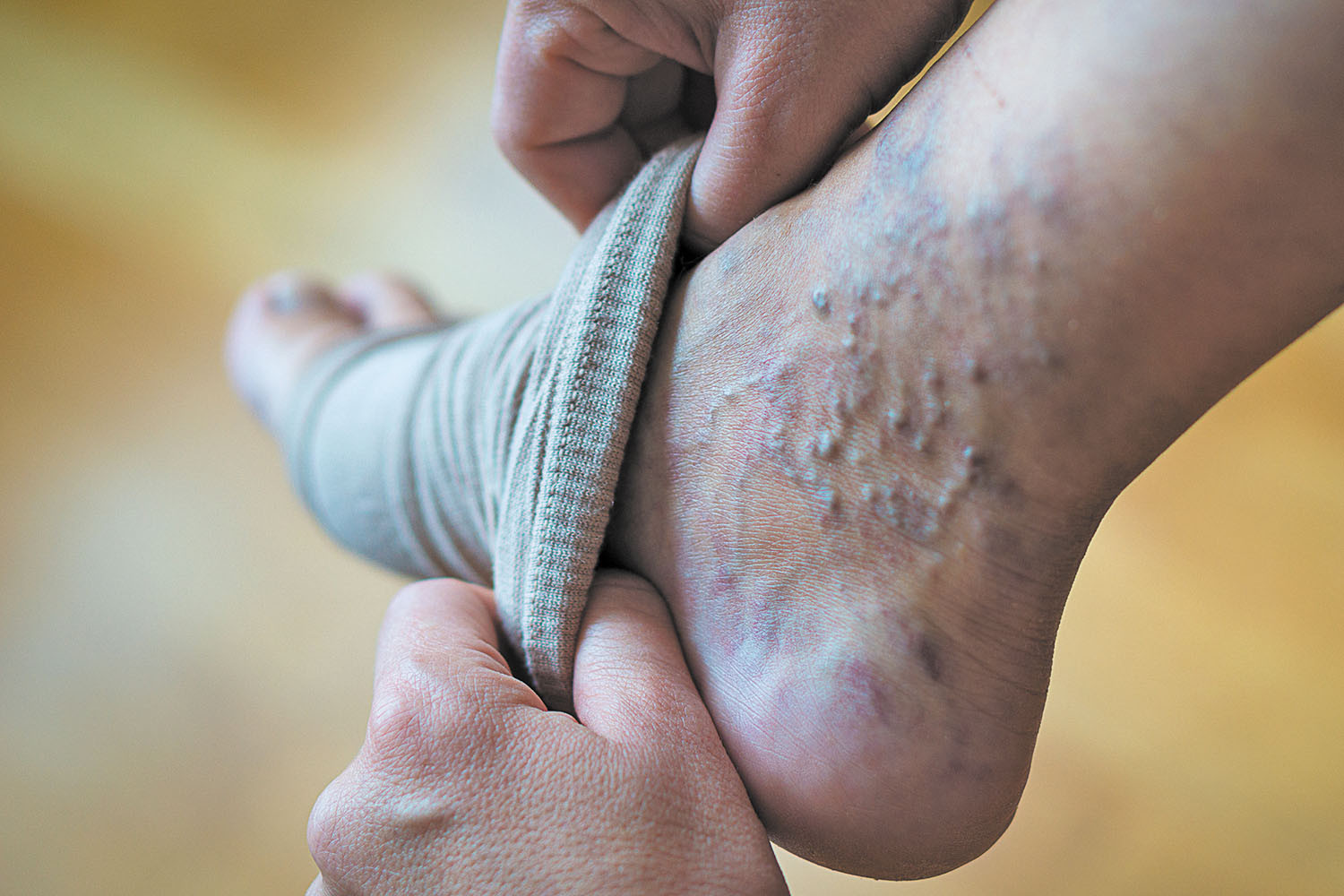Advances in varicose vein treatment
Techniques continue to evolve, making varicose vein elimination less invasive, less painful, and more efficient than ever.
- Reviewed by Anthony L. Komaroff, MD, Editor in Chief, Harvard Health Letter; Editorial Advisory Board Member, Harvard Health Publishing

Nobody wants varicose veins. They're all purply-blue, a mass of gnarled, bulging blood vessels visible in the lower legs. More than being unsightly, the veins can lead to leg swelling, tired and achy muscles, hard-to-heal ulcers that can get infected, and even disability. Fortunately, treatment for varicose veins has advanced steadily. And it's poised to take another leap forward.
What are varicose veins?
Varicose veins stem from problems with the "superficial" veins in the legs — that is, those near the surface, located about half an inch below the skin. Like all leg veins, superficial veins have one-way valves that open as blood is pumped up toward the heart, and close to keep blood from flowing back down into the legs.
Over the years, the valves in a vein can become worn and stop closing properly. "This causes the superficial vein to swell and puts pressure on branches of the veins, which become engorged and twisted. Those twisted branches are the ones called varicose veins. They look like a cluster of grapes under the skin," says Dr. Sherry Scovell, a vascular surgeon who specializes in venous disease at Harvard-affiliated Massachusetts General Hospital.
Treatment
To get rid of varicose veins, you must first shut down the malfunctioning superficial vein. That redirects blood flow through other (healthy) veins.
For years, the only treatment was a surgical procedure (called vein stripping and ligation) that required someone to go to sleep under an anesthetic so the surgeon could make an incision, tie off the problem veins, and pull them out. That caused significant bruising, discomfort, and swelling.
Starting in the 1990s, doctors began using a much less invasive procedure called thermal ablation. It involves closing the affected vein (without removing it) by threading a small catheter through the vein and using heat to make the vein collapse. It's done while you're awake, and you need only a local anesthetic. "It works well, and we have a lot of data on it. And, we now have even more techniques that may be performed with minimal or no local anesthesia," Dr. Scovell says.
The newer techniques to close superficial veins include
- chemical ablation, in which the doctor injects a foam solution that causes the vein's interior walls to scar and close
- adhesive closure, in which the doctor uses a catheter to deliver a natural glue that pulls vein walls together
- mechanochemical ablation (MOCA), in which the doctor uses a catheter with a rotating wire to damage the vein, along with a vein-scarring medication.
Those procedures often make small varicose veins disappear. If the varicose veins are large (and likely connected to other veins), doctors now have tools to remove them with a tiny incision or inject a medication that causes the varicose veins to scar and close.
Which approach is right for you?
The best treatment for varicose veins depends on your needs.
"Thermal ablation is best to treat long, straight veins. Chemical ablation is good for people with leg ulcers. MOCA is effective in areas where there's a nerve close to the vein. But they all require you to take it easy after treatment, and you'll need to wear a compression stocking for a little while," Dr. Scovell says. "With glue, you just walk out of my office and get right back to your life. It's best for someone who can't take time off. But some people have a reaction to the glue. So there are pros and cons for each option."
Prevent varicose veinsThese strategies can help prevent varicose veins:
|
Treatment on the horizon
In a few years, we may have another option to treat varicose veins. The technology, called high-intensity focused ultrasound (HIFU), "converts sound waves into a focused beam of heat that seals the vein. The treatment is done from the outside of the leg, almost like 'zapping' the varicose veins away," Dr. Scovell says.
HIFU is already approved in the United States to treat certain cancers, uterine fibroids, Parkinson's disease tremors, thyroid nodules, and more. And other countries have been using HIFU to treat varicose veins for years.
"We have excellent evidence from its use in the United Kingdom, and results of the first clinical trial here were promising," Dr. Scovell says. "If it's eventually approved, it will be a game changer. But don't wait if you need treatment. We already have minimally invasive approaches to help you right now."
Image: © Sergey Dogadin/Getty Images
About the Author

Heidi Godman, Executive Editor, Harvard Health Letter
About the Reviewer

Anthony L. Komaroff, MD, Editor in Chief, Harvard Health Letter; Editorial Advisory Board Member, Harvard Health Publishing
Disclaimer:
As a service to our readers, Harvard Health Publishing provides access to our library of archived content. Please note the date of last review or update on all articles.
No content on this site, regardless of date, should ever be used as a substitute for direct medical advice from your doctor or other qualified clinician.
















